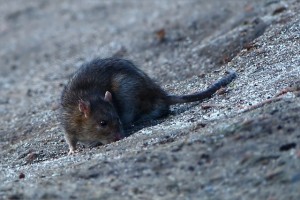RATS AND MICE:
If you’re not sure which pest has made it’s way into your home, take a look at our list of defining similarities and differences between rats and mice. Although they are similar in some ways, there are significant differences between their behavior, appearance, droppings, and where they may be located or causing damage in your home. Both animals are rodents and reproduce incredibly fast, up to 10 times a year, so if you suspect they may be in your home, call pest control immediately.
 MICE:
MICE:
- Smaller 3-10 cm
- Nocturnal
- White, brown, or gray
- Produces 40-80 droppings a day, smaller sized with one pointed end and one rounded end
- Long thing, hairy tails
- Triangular snouts
- Long whiskers
- Have larger eyes in proportion to their bodies
- Live 1 year in wild, up to 6 in captivity
- Prefer carb-loaded food like cereal, occasionally fruits and sweets
- Do not usually burrow or dig, make nests instead
- Cannot typically gnaw through glass and metal containers
- Gnaw electrical wiring & cardboard boxes
- Timid nature, not aggressive
- May be found in nests in the walls of a home
 RATS:
RATS:
- Larger in body size, larger heads and feet proportionally, 16-40 cm
- Nocturnal
- White, gray, brown, or black depending on species
- Produced 20-40 droppings a day, larger sized and banana shaped
- Long tails, hairless and scaly
- Blunt snout
- Have smaller eyes in proportion to their bodies
- Live about 1.5 years in wild
- Prefer grains and meat foods
- Burrowing behavior, can dig deep long burrows near your foundation or in your yard
- Can gnaw through sheet metal, building materials, cinder blocks, wood, and glass
- Greasy fur may leave marks on surfaces that they scurry across
- Depending on species may be found in basement (Norway Rat) or attic (Roof Rats)



